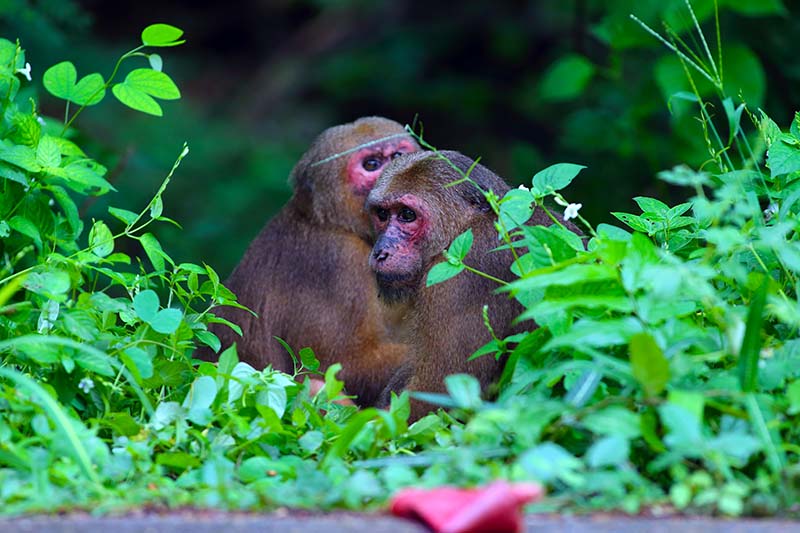2.5-minute read
The world was a vastly different place when we posted our first entry dedicated to the beauty, mystery, and magic of nature in December of 2018. We can’t be sure what challenges lie ahead post-pandemic, but as long as the planet keeps going, so do we. And like Earth, we rely on a little help from our friends, so thank you very much for reading! We’re celebrating our 100th blog post with a title tweak from Weekly Wondrous to Wild & Wondrous, some insight on the intelligence of the octopus—and a mountain of cake. We hope you’ll join us!
Coming out of your shell has its benefits. For example, you might become smarter and grow lots of limbs—if you’re an octopus, that is. When the marine mollusk shed its shell about 530 million years ago, it got two anatomical upgrades: super flexible arms, and a bigger brain to coordinate them. While the octopus may resemble a vacuum bag with adjustable attachments, there is more to the weirdly wonderful animal than meets the eye. It has evolved to become one of our oceans’ most clever occupants.
High intelligence typically occurs in long-lived species like elephants, apes, whales, and dolphins that have to manage interdependent social bonds. Although octopuses only live about two years, are usually loners, and don’t nurture their young, the invertebrates developed a very sophisticated nervous system that rivals vertebrates in size and complexity.
So, why the big brain? Researchers at the University of Cambridge believe that once the octopus emerged from its protective housing, the increase in intelligence and growth of flexible limbs enabled the shell-less mollusk to survive in a much wider range of environments. The 300 species of octopus have adapted to diverse marine habitats all around the world. Plus, the vulnerable, soft-bodied animals needed more developed sea-smarts to protect themselves from predators.
Just how smart are they? Problem solving and tool use are two hallmarks of advanced cognitive abilities in animals, and octopuses are able to do both, which means they’re pretty darn clever. Octopuses use stones and shells as armor against sharks and to block the entrance of their dens. When hiding places are hard to come by, they haul around coconut shells to use as makeshift mobile homes. And if they are caught between a den and a coconut shell, to discourage attacks, octopuses can change their skin color to mimic advancing predators. The masters of multi-tasking are also skilled at finding and extracting food from hard-to-reach places. Not only do they use their big brains to figure out how to pry open clams, mussels, and oysters, they can fetch food from a maze, open boxes, and remove lids from jars.
If you’re wondering if all octopus limbs are created equal, each of the eight arms can bend, lengthen, shorten, and turn clockwise and counter-clockwise in all directions. Scientists at Woods Hole Marine Biological Laboratory observing ten wild-caught octopuses have recorded 16,563 arm movements in 120 minutes of video. Top that!
Similar to an elephant’s trunk, the octopus’ exceptionally flexible arms are primarily made of muscle and connective tissue and rely on internal pressure to create movement. Although they have a wide variety to choose from, octopuses prefer to use specific arms for specific tasks, like rear arms for walking versus front arms for exploring, and some are lefties and some are righties.
It’s obvious that the octopus is not your run-of-the-mill mollusk. Aiming to pass on the sea creature’s big brain benefits to humanity, scientists and engineers are continuing to study its cognitive ability and complex arm movements to help develop bio-inspired soft robots for use in medicine and industry. All we can say to that is, we’re glad you came out of your shell, octopus!
If you’re also feeling inspired by the marine animal’s amazing maneuverings, you can download giant Pacific octopus wallpaper from the Monterey Bay Aquarium for your daily viewing pleasure.





































































